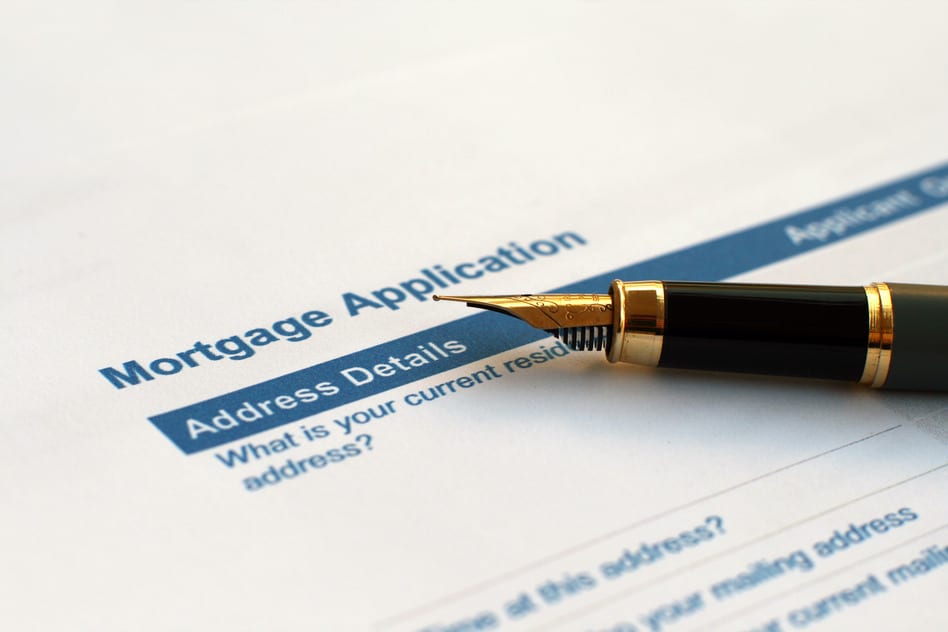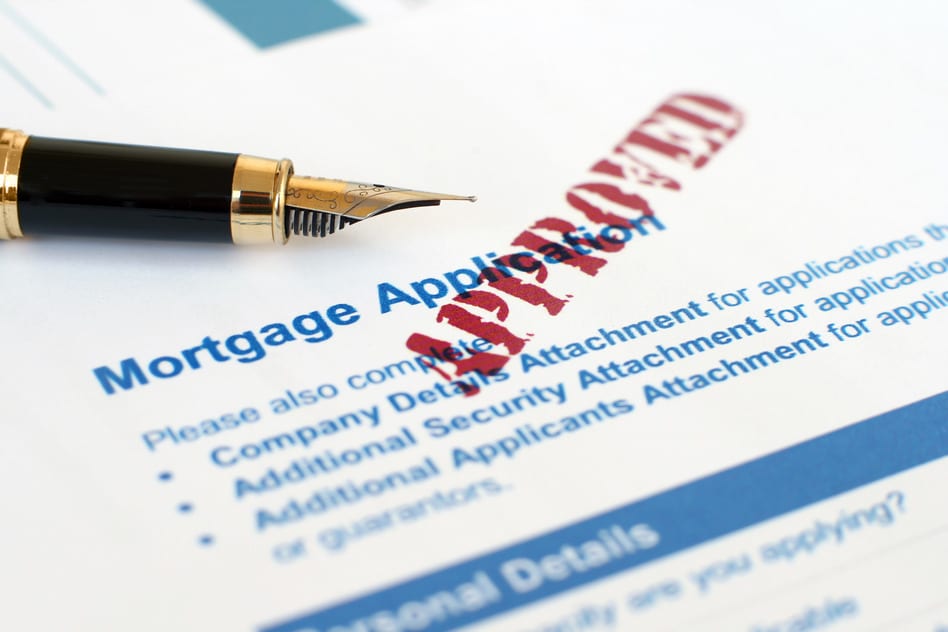

A Veterans Affairs (VA) loan allows you to buy your home with 100% financing or no down payment. However, there still will be other costs associated with the loan. You most likely still will need an earnest money deposit and closing costs to cover. You may be able to get the seller to cover some of the closing costs during settlement, up to 4% for a VA loan. When buying a home using VA financing, closing costs cannot be rolled into the loan. There are some costs that can be financed such as the VA funding fee.
For first-time home buyers, the VA funding fee ranges from 2.15% to 2.4% of the purchase price. If you are receiving any form of disability from Veterans Affairs, then the funding fee may be waived. The funding fee is based on various loan characteristics. On an Interest Rate Reduction Refinance Loan, an appraisal is not required, but the lender may require a drive-by-appraisal. Income documentation is not required, but source of income must be verified. On a purchase loan, the sales price cannot exceed the appraised value.
In general, when buying a home using 100% VA financing, the closing costs can range from 3.5% to 5.5% of the purchase price of the home. Closing cost can range from loan origination fees from the lender, credit report cost, appraisal, recordation cost, title fees, and transfer taxes, to name a few. If the 4% in closing cost assistance from the seller doesn’t cover these costs, then the remaining difference is the responsibility of the buyer. Also note, as a new home owner you will want to have some savings available after settlement in case of an emergency, and to pay for any added expenses once you move in, such as moving and purchasing curtains, lawnmowers, appliances, etc.
If you are ready to purchase a home with your VA benefits, keep in mind that there is a difference between down payment and closing cost.
Enjoy your home search and good luck!
Bruce Dorsey is employed by NFM, Inc. as a Mortgage Loan Originator, NMLS #174898. NFM, Inc. is a Veterans Affairs Automatic Lender (659985-00-00) under the trade name NFM Lending. NFM, Inc. is licensed as: Maryland Mortgage Lender (5330) under the trade name NFM Lending. For NFM lending’s complete licensing information, please go to www.nfmlending.com/licensing. NFM, Inc.’s Nationwide Mortgage Licensing System (NMLS) Company Identifier Number is 2893. NFM, Inc. is not affiliated with, or an agent or division of, a governmental agency or a depository institution. NFM, Inc. is an equal housing lender.

If you’re looking to purchase a home, the first thing you should do is obtain a pre-qualification. A pre-qualification can help you have a stress-free purchase transaction by letting you know how much home you can afford. Also, Real Estate Agents and even sellers often will only work with pre-qualified buyers.
What is a pre-qualification? A pre-qualification is a preliminary determination on whether the prospective loan applicant would likely qualify for credit under an institution’s standards and the amount of credit for which the prospective applicant would likely qualify.
What is the pre-qualification process?
Before taking a formal application, the prospective borrower will need to submit a pre-qualification request form or provide the following information to the Mortgage Loan Originator:
Year home was purchased
Original home purchase price
Total outstanding balance of all loans secured by the property
Estimated property value
Amount borrower would like to borrow
Once all the above mentioned items are submitted to your Mortgage Loan Originator, he or she will take all the items and enter them into a loan origination system (LOS). Then, he or she will review your expenses, debt, and potential down payments to determine how much house you can afford. After a loan amount is determined, he or she will advise you on your loan options. Please note that depending on your situation other documents may be needed.
If you have any questions on the pre-qualification process or would like to talk to a Mortgage Loan Originator, please click here.

Definition:
An adjustable rate mortgage (ARM) is a type of mortgage loan with specific rate terms. An ARM is usually initially fixed for a set period of time, followed by periodic adjustments according to a specific benchmark.
Other Factors:
There are various factors that determine the interest rate changes including market conditions, financial index and a margin. The index is a measure of interest rates generally, and the margin is an extra amount that the lender adds.
The initial rate and payment amount on an ARM will remain in effect for a limited period ranging from just 1 month to 5 years or more. With most ARMs, the interest rate and monthly payment change every month, quarter, year, 3 years, or 5 years. The period between rate changes is called the adjustment period. For example, a loan with an adjustment period of 1 year is called a 1 year ARM, and the interest rate and payment can change once every year.
Benefits:
Is an Adjustable-Rate Mortgage Right for You?
An adjustable rate mortgage (ARM) may be a good option for you if:
If you have any questions regarding an Adjustable Rate Mortgage and how it can benefit you, please click here to contact an NFM Lending Licensed Mortgage Loan Originator.

Fixed-rate mortgages are the most common type of mortgage selected by homeowners today. You are able to lock into a set interest rate which results in monthly mortgage payments that remain the same for the entire life of the loan. According to Warren Buffet, “the smart way to own a home has three elements: a fixed mortgage, affordable payments, and long-term hold.”
Definition:
A fixed-rate mortgage (FRM) is a type of mortgage with a specific rate term. A fixed-rate mortgage has a fixed interest rate for the entire length of the mortgage term. These mortgages are typically available in 5 year increments between 10 and 30 year terms. The 30-year fixed rate mortgage is the most common type of mortgage people take out.
Benefits:
Considerations:
Is this right for you?:
A fixed-rate mortgage may be a good option for you if:
If you have any questions regarding what a fixed-rate mortgage is and how it can benefit you, please click here to contact a licensed Mortgaged Loan Originator.

If you’re looking to buy an expensive home and need a large loan amount, a Jumbo Loan could be the right option for you. Jumbo loans exceed the conforming limit on loans set by Fannie Mae and Freddie Mac. How do you know if you’re loan amount is considered “jumbo”? And how do you know if you qualify for a jumbo loan?
How jumbo is jumbo?
In most states, the conforming limit is around $417,000, but varies by location and number of units on the property. Other areas that are specified to have a higher cost of living have a higher conforming limit of about $625,500. The official chart can be found here. If you are looking to purchase a home and would like a loan amount greater than the conforming limit for your area, it’s likely that you will want to apply for a Jumbo Loan.
Requirements
Because jumbo loans are so large, the down payment and interest rates will usually be larger than other loans. Also, there is no private mortgage insurance (PMI) with a jumbo loan. To qualify, requirements for the borrower will be different compared to requirements of other loan types. Usually jumbo loans require a lower debt-to-income ratio, a higher credit score, and higher emergency funds.
Benefits
Rates on jumbo loans are still at an all time low. Years ago, they were much higher than rates on conventional loans, but now they have shown to be lower at times. Also, interest on any loans equal to $1 million is able to be tax-deducted.
If you would like to get more information on jumbo loans, or if you would like to see if you pre-qualify, contact one of NFM Lending’s Licensed Loan Originators by clicking here.

Are you looking to do a home renovation? Would you like to re-do your kitchen or baths? Do you need new flooring? You might want get a new roof or repair a damaged section of your house. Making improvements to your home can be very costly, and it can be hard to come up with thousands of dollars to pay the contractor’s. If you are looking to improve your home, but lack the necessary funds, consider applying for a Home Improvement loan.
Definition
Home Improvement loans, or FHA 203(k) loans, are a type of federally insured mortgage loans that are used to fund renovations and repairs. These loans can be made on a borrower’s primary residence for up to a maximum of 110% of the after improved value of your home. There is a minimum of $5000 of required repairs with no maximum (subject to FHA’s maximum loan limits). These loans can be made to refinance your existing home or purchase an existing home.
Requirements
Loan qualifications are the same as every other FHA forward mortgage. A potential applicant will need to credit and income qualify. You will need to get an estimate from a state licensed contractor for all work to be performed. If total repairs exceed $35,000 or if repairs are of a health, safety or structural nature than a inspector form the Department of Housing & Urban Development will be required to supervise the repairs.
Getting the Loan
If you would like to see if you will qualify for a Home Improvement Loan, contact one of our Licensed Mortgage Loan Originators by clicking here.

The big day has finally come; you’ve decided that you’re ready to purchase your first home! Your initial feeling of excitement likely is preceded by an overwhelming feeling of stress. Not to worry—the folks at NFM Lending have got you covered.
There are two main ways you can go about applying for a loan. You can apply for pre-approval of a loan to help determine what you can afford to borrow (please note that pre-approval is not guaranteed). Also, you can officially apply for a loan after you find the property of your dreams. The first steps to applying for a loan are quite simple.
When you are ready to apply you need to submit information about all of the applicants (for instance you and your spouse). Make sure that you are prepared to give your Mortgage Loan Originator the following information: names, social security numbers, and the monthly income of all the applicants. You also need to submit the subject property address, and the estimated value of the property being bought. The amount of the loan and the down payment are determined during the application process. Your lender will determine if you are able to qualify for that loan amount.
Your Mortgage Loan Orignator will take your application and collect items needed for review.
Your Mortgage Loan Originator will put all of these items together, order a title, and help schedule an appraiser to determine the value of the property. After this, they send your application to underwriting. An underwriter will determine whether or not you qualify for a loan.
Your dream of owning a home is not too far away. Make sure that you have all of the items listed in this article. The more organized you are, the easier the loan process may be for you. If you are considering getting your loan process started we wish you the best of luck!
If you would like to talk to one of our Licensed Mortgage Loan Originators about applying for a loan, please click here.

Throughout its course of existence, a loan takes on various forms of being: application, amortization, re-finance, maturity. It could stay in the lender’s portfolio for its duration or move into the exciting world of the secondary market. It may split off into two loans if the borrower decides to obtain a home equity line of credit (HELOC) or a second mortgage. A loan could even pay money to its borrower in the form of a reverse mortgage!
What exactly happens throughout the life (or lives) of a mortgage loan?
A loan comes to life when a borrower decides they want to purchase a piece of real estate and obtain a mortgage loan or they want to re-finance their current mortgage. A borrower may apply for pre-approval of a loan to help determine what they can afford.
Once someone finds a piece of property they wish to purchase, they may officially apply for a loan. Even though the borrower may have already applied for pre-approval, it is not a guarantee, so they must apply again. To apply, the borrower must submit the names, social security numbers, and the monthly income of all applicants, the subject property address, and the estimated value of the property being bought or refinanced. During the application process, the amount of the loan and the down payment are determined by the borrower. At this point, the lender determines if the individual is able to qualify for a loan amount.
A loan officer takes the borrower’s application and collects the items needed for review. Here is a list of items a borrower should be prepared to submit to their loan officer:
The loan processor puts all these items together, orders a title, helps schedule an appraiser to determine the value of the property, and then sends the application to underwriting.
In the underwriting process, the lender determines the degree of risk involved with lending the borrower money. Here are the “three C’s” that are evaluated in underwriting:
Credit: A credit report is obtained from each of the three credit bureaus—Equifax, Transunion, and Experion. These reports are analyzed to determine how well a borrower manages debt.
Capacity: Capacity is a borrower’s ability to make payments on the loan. The borrower’s employment and income is evaluated along with their current debt and assets (debt-to-income ratio).
Collateral: When looking at collateral, the lender evaluates the type of property, value of the property, and cost. To determine the value of a piece of property, an appraiser is sent to analyze various factors.
Once the underwriter grants approval, a clear to close is processed and the settlement date can be scheduled.

The closing on a loan is where all the necessary paperwork is presented and signed. At closing, the title of the property is transferred to the buyer, an escrow account is set up, the amortization schedule is issued, funds are obtained by the borrower, and the security interest of the lender has been recorded by the County or City Clerk.
Once a loan is closed, it splits onto two different paths: the lender’s path and the borrower’s path.
On the lending side, a mortgage loan can either remain in a lender’s portfolio or enter the secondary market. In the secondary market, loans are sold by lending institutions to private and public investors such as Fannie Mae and Freddie Mac to be sold as mortgage backed securities. The secondary market allows lenders to replenish cash reserves so that they can originate more mortgages to consumers.
From a borrower’s perspective, after closing the borrower then makes payments on the loan following an amortization schedule. By refinancing or taking out a Home Equity Loan or Line of Credit, the loan can be modified at a later date depending on the borrower’s future financial needs.
Interest rates are currently at historic lows in which people with existing mortgages may want to take advantage of. By refinancing, a borrower can reduce their monthly payments as well. Or a homeowner may also desire a large amount of cash for home or remodeling for safety reasons (only available if borrower is occupying the property). For these and other reasons, the option to refinance a mortgage is often available.

If someone is in need of a large sum of money, they may consider taking out a second mortgage on their home, otherwise known as a Home Equity Loan. This allows a homeowner to use the equity that they have established in their home to remodel, pay off other debts, pay for their children to go to college, or whatever else they choose to do with their equity. These loans typically have higher interest rates since they are a higher risk for the lender.
A Home Equity Line of Credit (HELOC) is also considered by homeowners that wish to take advantage of their equity. What makes a HELOC different from a traditional home equity loan is that the borrower does not receive the amount of equity up front, but instead has it as a line of credit in which the maximum amount that can be borrowed is their amount of equity. Unlike a traditional credit card line of credit, a borrower’s home is used as collateral.
A reverse mortgage is targeted towards senior citizens, 62 years of age or older, who wish to use their home equity to supplement their income. This type of mortgage is called a “reverse” mortgage because instead of making monthly payments to a lender, the lender makes payments to the homeowner. There are also no income or credit score requirements, although the homeowner is responsible for taxes, insurance, and maintenance of the home. In order to qualify for a reverse mortgage loan, the borrowers may not be delinquent on any federal debt, must live in the home, own the home outright or have a mortgage balance that can be paid off at closing with proceeds from the reverse mortgage loan. The loan does not have to be paid off until the borrower moves, sells the home, does not live in the home for twelve consecutive months, fails to pay property taxes or homeowners insurance, lets the home deteriorate beyond reasonable wear and tear, or the last surviving borrower passes away. Afterwards, the estate generally has six months to repay the balance or sell the home.
After making regular payments on a loan, the loan matures the date it is due to be paid off. If a loan is not paid off by its’ maturity date, it enters into default. Depending on the amortization schedule, there may or may not be a balance of principal due on this date.